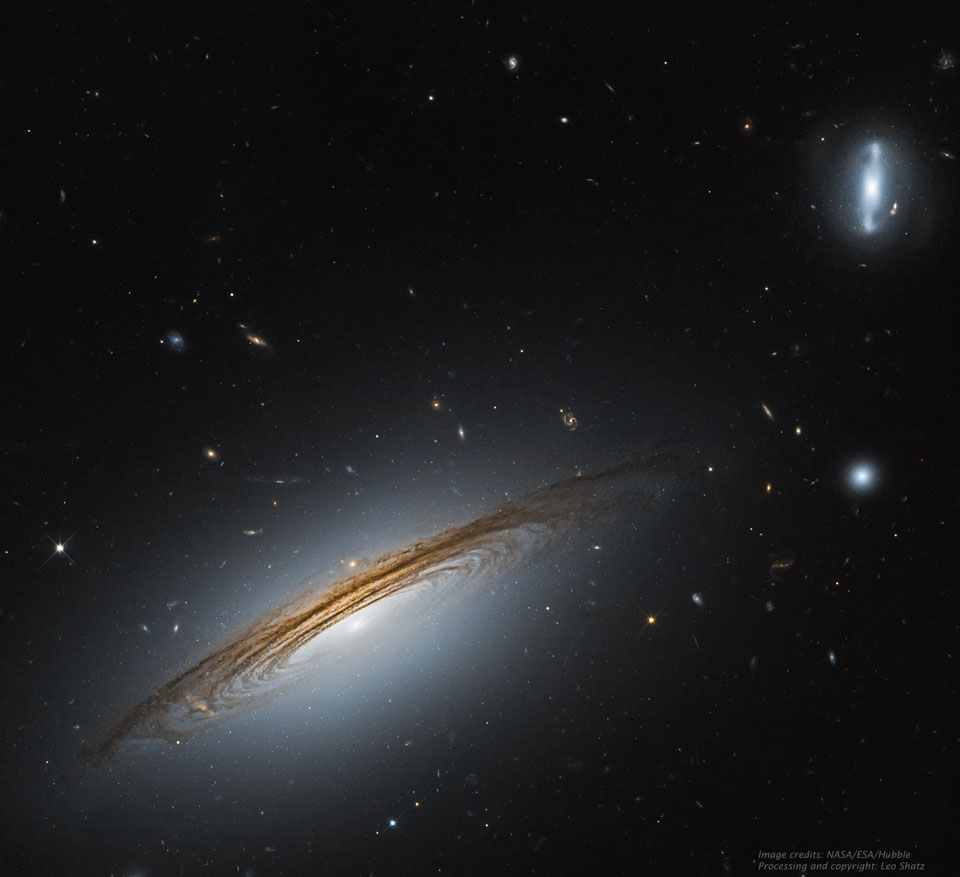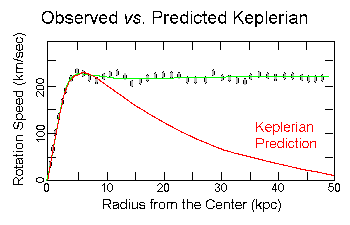It is interesting to compare today's APOD with the original image of this galaxy, published on
Space Telescope's own website.
As you can see, the color balance of the APOD is much bluer, so blue that the lenticular, "red and dead" barred galaxy at upper right looks blue, even though it totally lacks any sign of star formation. The likely reason for the blue color balance of the APOD is that the original image is a two-filter image, where the filters are 606 nm (centered on orange) and 814 nm (near infrared). Presumably the 606 nm filter image has been treated as blue in the APOD, or at least a bright shade of cyan. In my opinion, there is very little "true cyan" in UGC 12591 or in any of its neighboring galaxies, which is to say that the original Space Telescope image looks much more "natural" to me.
The details in the dust lane of UGC 12591 have also been sharpened in the APOD.
I love the "speed line" appearance of the dust lane, as if it was taken out of a
Disney cartoon.
Apart from the speed line effect, however, UGC 12591 reminds me of the Sombrero galaxy, M104.
Obviously UGC 12591 and M104 are far from identical. The halo of M104 is much larger and brighter than the one of UGC 12591. Also M104, while probably lacking in any sort of high-mass star formation, nevertheless almost certainly contains pockets of "young-ish" stars of, perhaps, late spectral class A. The moderately young stars of M104 are probably embedded in the dust disk of this galaxy. UGC 12591, by contrast, appears to have a dust disk that is devoid of anything but dust. Also the dust lane of M104 doesn't look like dizzying racing stripes!
It would appear that inner dust lanes are common in lenticular galaxies. Note in the dust lane of NGC 6861 a tiny speck of blue in the dust lane (at lower left), so there might be a little bit of star formation going on there after all. The dust disk of NGC 6861 does seem more substantial than the thin dust arms of NGC 2728.
Ann
 UGC 12591: The Fastest Rotating Galaxy Known
UGC 12591: The Fastest Rotating Galaxy Known





